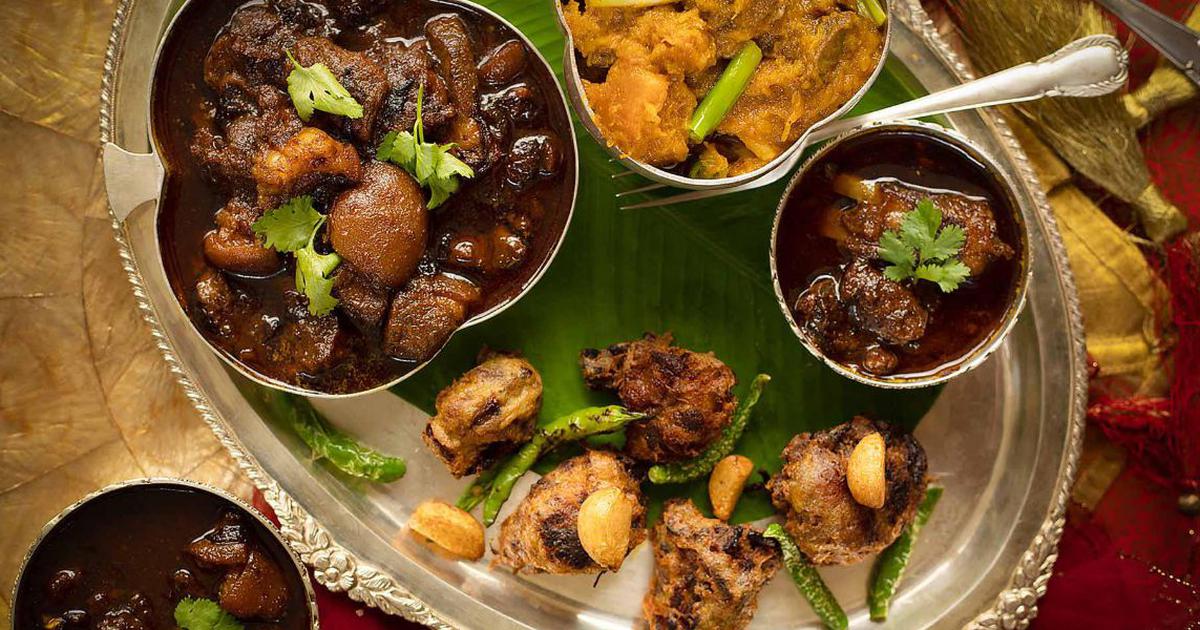In ‘Gone Away’ by Dom Moraes, Chapter 4 is called ‘Living Like a Rana’. The most significant thing he seems to remember from staying in a Rana palace is that his hosts sent him a woman to warm his bed. Tantalizing as that may seem to some, there were other delights to be had within the walls of these palaces. These have been catalogued by Rohini Rana in her new ‘Rana Cookbook’.
These are recipes from the palaces of Nepal and though Rohini didn’t get them all she got a good number: 134 plus some from feasts and festivals. Eight of them I shall review here and you can try them at home, after getting the book, which I heartily advise.
In a splendid production of Penguin Random House, India, each recipe is magnificently illustrated. The recipes are divided into sections. This is useful as not everyone has the same tastes and one can choose the section one is most interested in.
Rohini, or Dolly as she is known, spent a lot of time researching this book and spoke to many relatives and old-timers who had cooked in the palaces. Born in India and married into a prominent Rana family, her husband is former Chief of Army Staff, Gaurav Shumshere JB Rana. They are from the family of prime minister Chandra Shumshere and their family durbar has now become Babar Mahal Revisited, a favorite haunt of tourists and Nepalis alike and well restored by her brother-in-law Gautam Shumshere and architect Eric Theophile.
Dolly used to run a restaurant there and it is still well worth a visit. Also in the same complex is the renowned French restaurant ‘Chez Caroline’ and so one can taste food from two continents. Many do, for the complex has many interesting stores and one can well while away a full day. But back to the book.

One memorable recipe is number six, which is chicken pulao. The thing that should be noted is that until the early 70s the Ranas did not eat chicken, which was thought to be ‘bitulo’. They would have eaten ‘kasiko pulao’ but of course nowadays chicken is accepted and goat meat is darned expensive. How have the times changed! Of course partridge pulao was another favorite and still is if one can get the birds.
This recipe was provided by Dolly’s uncle-in-law Sagar Shumshere, and now we should remember what good cooks Rana men tended to be. Probably because in the past they spent so much time in army camps without people to cook. Brahmins were the chief cooks because of the sacredness of rice but not all Brahmin men would join the army. Whatever, Rana men were good cooks, some of them still are. Why not when they had all the best ingredients at their disposal.
A sine qua non, especially for marriages and rice feeding ceremonies, appears in recipe 16. It is, of course, wild boar. In the old days pork was forbidden as ‘bitulo’ but strangely the wild pig was deemed okay. These were hunted in great numbers in the Tarai, but would later be captured and kept in the palaces, fed for pending feasts. A wedding without wild boar was a flop before it started.
Recipe 16 gives you fried wild boar, a great treat. Dolly got this recipe from brother-in-law Nanda Rana and just reading how it is made makes the mouth water.
Mutton Gravy, which is number 24, is from the family of Padma Shumshere and contributed by Colonel Jeevan Thapa, son of Padma’s granddaughter. This goes to show how far these recipes were handed down and the painstaking research that Dolly conducted.
Chicken potato chops (recipe 44) are great on picnics. Given by Sangita Rana it was provided by her maid Savita.
Recipe 66, green pea lentils, provided by Rama Malla, favorite daughter of Padma Shumshere and owner of Malla Hotel, is a recipe that will probably be appreciated by Asians and Europeans alike. Green pea lentils are the ones most commonly exported after all.
Next I recommend the vegetable medley or ‘mis mas’ provided by Jaya Rajya Laxmi Shah of Shah Mahal, daughter of Samrajya Shumshere, and actually one of the best cooks ever. Try this recipe, do.
Now we come to recipe 103, one of my favorites, beaten rice with either meat or vegetables, a great tea-time snack. Never mind tea time, it’s good any time. Try it.
My final choice is recipe 115, another favorite and good with 103. It is black charcoal grilled tomato pickle, provided again by my favorite cook Jaya Shah of Shah Mahal. This was actually one of the things I first learned to make on arriving in Nepal.
All in all, Dolly has done a splendid job in bringing so many recipes together. Now they can be handed down. After all so many things were destroyed in public anger against the Ranas, which was not always justified. After all those who destroy history destroy the future. What is the future but our past improved?
I recommend this book for the wonderful recipes but also for Dolly’s careful recording of the past. We may never live like a Rana, but with this book we can at least eat like one.











